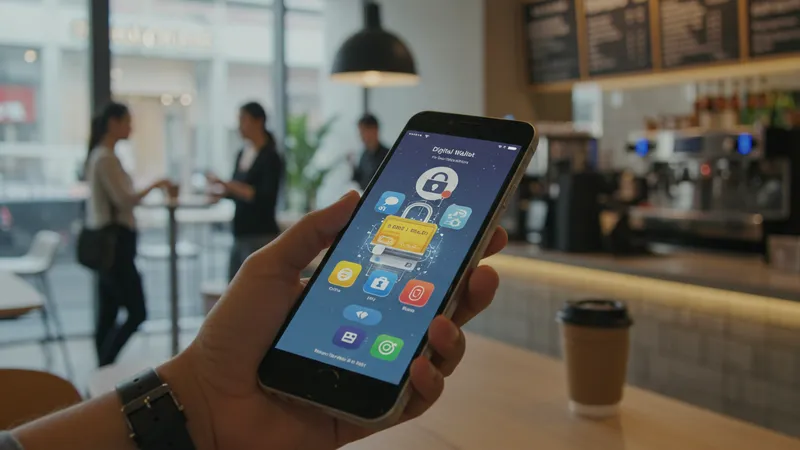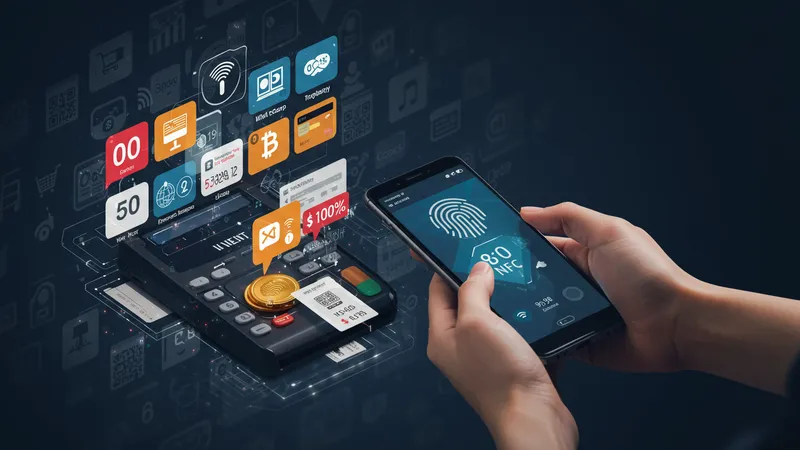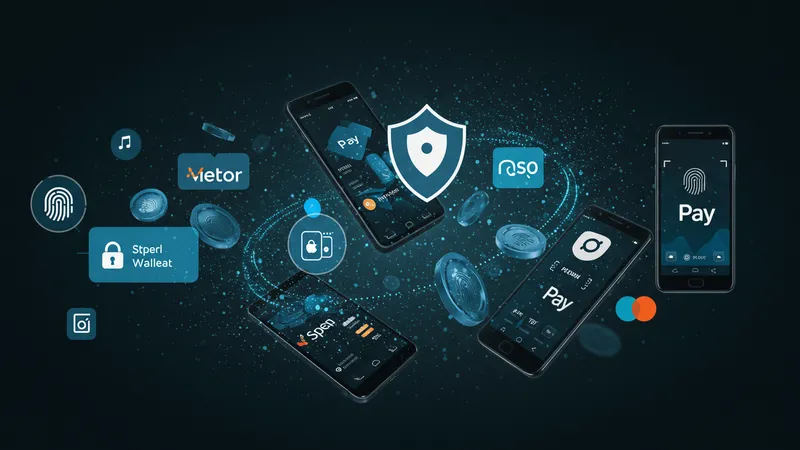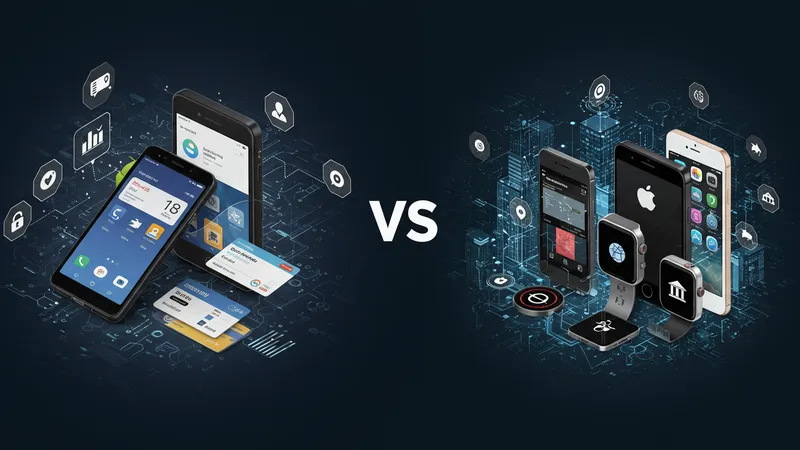

Imagine leaving your wallet at home, yet still being able to pay for coffee, shop online, or send funds to a friend in seconds—all with just your phone. This is the everyday reality enabled by modern digital wallets: secure platforms that store your payment methods, cards, and even loyalty programs in one sleek, touch-free space. Far from simple card replacements, these tools combine convenience, security, and innovation, making transactions smooth and instantaneous whether you’re in a store or halfway across the world.
The backbone of these platforms lies in encryption and user authentication technologies. Your sensitive details aren’t stored openly; instead, advanced methods like tokenization substitute real card numbers with digital tokens—sheltering your information from prying eyes. Integration with smartphones and wearables expands their reach, allowing practically anyone with a connected device to access streamlined payments, digital receipts, and instant balance updates—all without digging through pockets or handbags.

Compared to traditional payment methods, digital wallets dramatically cut the time spent at checkout counters. Near-field communication (NFC) makes tap-to-pay effortless, and online checkouts often need just a fingerprint or facial recognition—reducing friction, forgotten passwords, and checkout abandonment. These platforms are also expanding rapidly to support peer-to-peer payments and digital currencies, further extending their value beyond physical stores.
Security remains at the heart of their appeal. While digital wallets are tied to real bank cards, merchants only receive tokenized information—lessening the risk of fraud. Many platforms add layers of verification, including biometric scans, PINs, or two-factor authentication, ensuring that only you can authorize payments even if your device is lost or stolen.
Globally, uptake is soaring. Recent reports show that billions of transactions are handled through digital wallets each year, with adoption rates highest among younger, tech-savvy demographics but growing rapidly across all age brackets. Their flexibility appeals to urban shoppers and world travelers alike, who benefit from instant currency conversion and contactless transit access.
One often-overlooked feature is integration with loyalty programs and digital tickets. Many wallets allow automatic point collection, faster check-ins, and instant access to event passes—streamlining both retail and travel experiences in ways traditional cards simply can’t replicate.
These capabilities only scratch the surface. The deeper details reveal even more valuable insights ahead—ranging from specific feature comparisons to the most effective ways to safeguard your digital payments.
Digital wallets harness a combination of advanced features that set them apart from older payment methods. Many include quick-add options for bank accounts, credit cards, digital currencies, and identity credentials. Users can monitor spending through real-time notifications, set payment limits, or even manage multiple cards—all within a single unified interface. These tools often pair with e-commerce sites, giving shoppers discounts and rewards otherwise unavailable with basic card payments alone.

An additional benefit lies in platform interoperability. Most digital wallets now support online and in-store payments, as well as peer-to-peer transfers, bill splitting, and loyalty programs. For example, users of Google Pay or Apple Pay can scan QR codes, tap NFC terminals, or authenticate payments online by simply using their device’s built-in security options like Face ID or fingerprint sensors.
Security is strengthened through constant updates and multi-factor authentication. Unlike static plastic cards, compromised details can be instantly disabled, devices remotely wiped, and accounts locked down. Biometric verification acts as a powerful barrier, ensuring that lost phones rarely mean lost funds—something physical wallets can’t provide.
Flexibility extends to transportation, ticketing, and in-app purchases. Many wallets are accepted on public transit networks, parking meters, and even vending machines in various markets. This allows for frictionless navigation of everyday life, reducing dependency on cash or physical cards while still maintaining robust security and easy record-keeping for every transaction.
Digital wallets are designed with layered security that keeps sensitive data shielded from threats. At the core is tokenization, which replaces card numbers with random tokens during transactions, making stolen data nearly useless to attackers. Devices also leverage secure hardware elements, like Apple’s Secure Enclave or Android’s Trusted Execution Environment, to protect credentials beyond just software channels.

Most platforms—including Google Pay, Apple Pay, and Samsung Wallet—require user authentication for every purchase. This could be a fingerprint, facial scan, or PIN, ensuring that only authorized individuals can approve payments even if a device falls into the wrong hands.
Updates are rolled out frequently to patch potential vulnerabilities. Providers use AI-driven fraud detection systems that analyze purchasing behavior, flag suspicious activity instantly, and sometimes request additional verification before transactions proceed. Account holders are typically notified of any unusual login or spending attempts, adding another protective barrier.
Privacy is also at the forefront. Most digital wallets keep payment details abstracted so merchants never receive your actual card number. This contrasts sharply with swiping a debit or credit card in a traditional terminal, where magnetic stripes and chip data can be more easily intercepted by skimming devices.
Each major digital wallet platform has its unique benefits and trade-offs. Google Pay is praised for its Android integration and universal acceptance, letting users store not only cards but also transit passes and event tickets. Its real-time alerts and AI-powered visibility into spending help users track finances and spot irregularities at a glance.

Apple Pay stands out for privacy and device security. Users benefit from industry-leading encryption, strict policies prohibiting transaction tracking, and seamless use across Apple’s entire ecosystem—including Macs, iPhones, iPads, and smartwatches. Contactless payments are effortless, supporting a wide list of international banks and enabling global usage without direct card exposure.
Samsung Wallet offers unique compatibility. Its MST (Magnetic Secure Transmission) technology allows payments at older terminals that lack NFC, broadening the range of businesses where digital payments work. Samsung’s integration with reward programs and offline payment support make it particularly appealing for those seeking versatility.
While all three platforms provide a zero direct cost for users, actual availability of features may vary based on the device and local bank partnerships. Comparing individual offerings helps users choose the best fit for daily routines, device ecosystems, and privacy preferences.
The next generation of digital wallets promises even more refined experiences. Innovations in biometrics—such as voice and palm recognition—will offer added security layers, promising ever-faster, more user-friendly transactions. Platforms are also exploring deeper integration with decentralized finance and digital currencies, bringing greater choice and privacy control to mainstream users.

Wearable integration is another exciting frontier. Payments and travel passes can now be accessed through smartwatches, fitness bands, and even rings, turning ordinary accessories into payment devices—reducing reliance on smartphones while maintaining robust authentication standards.
Cross-platform collaboration is likely to expand, enabling users to store, access, and manage credentials between multiple wallets or devices seamlessly. This opens doors for travelers and digital nomads, who rely on fast, frictionless payments in unfamiliar environments while maintaining safety and transparency.
Ultimately, the evolution of digital wallets is centered on making payments not only safer, but nearly invisible—allowing convenience and trust to coexist without compromise. As society embraces these advances, new use cases and integrations will continue to unfold, supporting both individual consumers and broader economic systems.